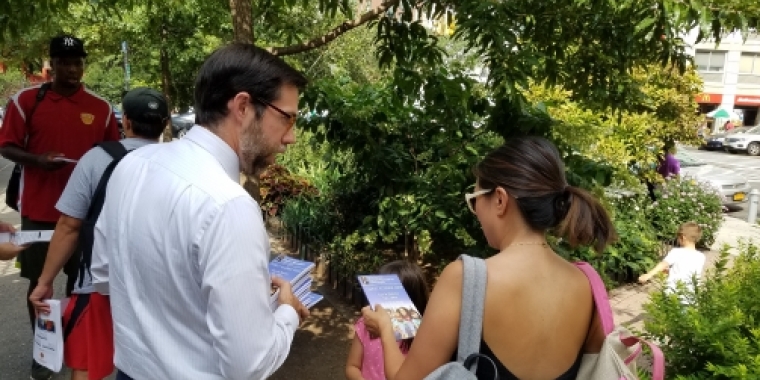
SENATOR SQUADON TESTIFIES BEFORE NEW YORK CITY COUNCIL COMMITTEE ON PARKS AND RECREATION REGARDING COMMUNITY PARKS INITIATIVE
November 5, 2014
Below please find Senator Squadron's prepared remarks before the New York City Council Committee on Parks and Recreation on November 5th, 2014.
My name is Daniel Squadron, and I represent the 26th District in the New York State Senate. My district includes the Manhattan neighborhoods of Tribeca, Battery Park City, the Lower East Side, Chinatown, the Financial District, Greenwich Village, Little Italy, SoHo and the East Village and the Brooklyn neighborhoods of Greenpoint, Williamsburg, Vinegar Hill, DUMBO, Fulton Ferry, Brooklyn Heights, Cobble Hill, and Carroll Gardens. I thank Parks Committee Chair Mark Levine for convening today’s hearing on the Community Parks Initiative, and for the opportunity to testify.
The Community Parks Initiative’s focus on local, neighborhood parks goes to the heart of what it means to talk about equity in the parks system. Real credit is due to the Parks Department for identifying the neighborhoods to begin CPI, including some in my district: Luther Gulick Park, and Sol Lain and Henry M. Jackson playgrounds on the Lower East Side.
But, today, CPI is still only in 35 parks. We know the Parks Department has identified more than 200 additional parks with a real need.
It is critical that the Parks Department expand upon CPI’s important and impressive foundation, with a goal to reach even more parks and communities in need over time. Doing that successfully requires keeping the parks equity push going. It requires a continued focus on inequities in the system, as well as a greater overall investment in the public parks budget, which commands just over one half of one percent of the City’s budget.
As I have long said, the way to do that is to continue to change the dynamic around the way parks are funded. This year’s discussion of parks funding and equity has been robust, with real leadership from the Mayor, Commissioner Silver, Chair Levine, and the City Council.
But we must create a dynamic that will continue over the long term. In 2001 we had the 1% For Parks campaign, but it died out and wasn’t really replaced until last year, an inadvertent consequence of the success of some of the wealthiest conservancies. In some of the most powerful and wealthiest parts of the city, the local parks are doing better than ever – to the great credit and generosity of donors and the effectiveness of the conservancies. But as a result, the disinvestment in the parks system is invisible in some of the most powerful parts of the city. It’s hard to get excited about a campaign to nearly double the parks budget to one percent when your local park is doing so well.
I am continuing to work with the Mayor, Commissioner Silver, Chair Levine, advocates, and the conservancies to expand the structural impact of the Community Parks Initiative, by ensuring the conservancies play a meaningful role long into the future, which the conservancies have expressed a real openness to.
Whatever final form it takes, participation by the conservancies must fundamentally link them and their patrons, to the overall system. This year we had the parks equity push. In 2001, we had the 1% For Parks campaign. It is critical that the stakeholders and this committee work together to ensure that the parks equity push is not something that comes up every twelve years, but something that comes up every year until the crisis is solved.
This year’s conversations, including those with the conservancies, have helped to change the dynamic, and I am hopeful that, at the end of this year, we will have a fundamentally different structure that ensures the dynamic is changed going forward.
Thank you for the opportunity to testify.
Share this Article or Press Release
Newsroom
Go to NewsroomSquadron Shares Annual Parent Resource Guide With Students & Families
September 9, 2016

Squadron 2016-17 Parent Resource Guide
September 8, 2016


